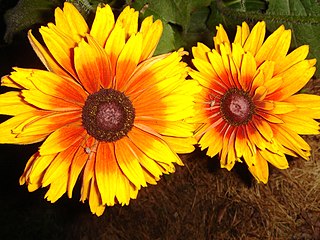This blog post should have gone
out this morning at about eight o’clock. But I awoke feeling that we were missing something. I had felt the need to refer to the ending of
lockdown but was puzzled at the lack of clear-cut information try, as I might, to get it. So, I decided to
delay publication. Here is the intended first paragraph. I wrote it, yesterday, just after
we heard about the re-imposition of lockdown in certain northern towns:
Tomorrow is the first day of August. The
day that lockdown ends, doesn’t it? Well, I have just done a search on Google
and cannot get a very clear answer. It certainly does not feel like the end. In
any case, our local paper says that our borough (Sandwell) is halfway to a
local lockdown as we appear in the “top ten” coronavirus hotspots
One reason I held back was our
local situation. By the time the Prime Minister made his “squeeze the brakes” speech
at midday, Public Health England (PHE) had published the latest data. Here was the missing information. The key
indicator is the ‘Incidence per 100,000 population (weekly)’. Sandwell (which
includes Tipton) stands at 28.1 – higher than in many towns that are now locked
down again
So, put simply, we are on the brink. The local council is urging
those considered vulnerable to continue sheltering, despite the national easing. See video here. So, in effect, we have a moderated form of local lockdown. The shape of things
to come? You can check the figures on the PHE site here - you will see how narrowly missed being locked down with the northern towns (see Local Authority Watchlist Areas)
You may rightly ask what this has
to do with our gardening / fund-raising initiative? Well, it is in its origin a
lockdown initiative. Without lockdown the question arises – do we continue? Should
we draw a line under the Codger project? It now seems that the question is
premature. But still we need to be thinking about it. One thing is certain: I want
to support the Webb's plant sale next year (see previous issues for details)
and hope very much that it will go ahead
Right now, I still have plants to supply those who would like them from the stock that has been built up. And, as far as I am aware, the BCM need has not gone away. So, it is business as usual but, hopefully, at a rather slower pace. Certainly, slower on a day like today – I thought I would melt. Perhaps I should not have made the comment about more sun to ripen the tomatoes. And, you may remember, I also said something about how uneconomic it is to grow potatoes. Here, I shall eat my words …
 |
| Buckshee potatoes weighing 4.5kg |
Potato
bonanza
At the beginning of lockdown, I
noticed a bare patch of soil with some shoots coming through. Suspecting these
to be potato plants I decided on an experiment. A covered them with some half-rotted
wood chip which I banked up as further growth was seen, adding more material every now
and then. Would I get a result?
 |
| Did not look promising but ... |
On Wednesday, I cleared the pile
of woodchip and had a little dig. The photograph shows the result – a surprising
4.5kg! Even more surprising was the efficiency: the area measured 70cm by 45cm,
which I make 0.315 of a square metre. This makes the yield around 14kg per sq metre, which
seems pretty good to me. Looks like I shall have another go next year
It makes me think of the quotation,
“I planted, Apollos watered, God gave the increase”. Except, in this case, I
did not even plant! Rarely a day goes past when I don’t learn something new from
gardening. So, much happens outside the plan – it is part of the endless
fascination. Helps with humility, too
 |
| Shot taken in April showing raised beds |
Square-foot gardening
Doing the sums above on the potato yield reminded me of something I have been meaning to cover - square-foot gardening. This was a technique advocated some years ago and involves splitting your plot into one-foot squares for planting and growing. I gave it a trial but came to the conclusion that the size was too small. However, I found the concept helpful. That is, divide your plot in to squares or rectangles. The web abounds with videos on the topic
It fits well with raised beds. I'm glad that I constructed these as I have now reached the stage where bending is not as much fun as it used to be. I have only found one disadvantage - they dry out at the edges. Also, I wish now that I had not gone over completely to raised beds - not so good for raspberries, I have found. The drainage is a bit too good - it is one of the many jobs I need to get around to doing. That's about all for this week, friends. Sorry to be late with this post
Best wishes from the old Codger (melting in the heat)
 |
| Pears looking good in the sun |





_male_5.jpg/320px-Common_brimstone_butterfly_(Gonepteryx_rhamni)_male_5.jpg)
_(5593437102)_cropped.jpg/320px-Garza_Real_(Ardea_cinerea)_(5593437102)_cropped.jpg)















.jpg/433px-Chain_Making_5_(3962358269).jpg)
_Brown_by_Nathaniel_Dance%2C_(later_Sir_Nathaniel_Dance-Holland%2C_Bt)_cropped.jpg/353px-Lancelot_('Capability')_Brown_by_Nathaniel_Dance%2C_(later_Sir_Nathaniel_Dance-Holland%2C_Bt)_cropped.jpg)
_Salop.jpg)


















